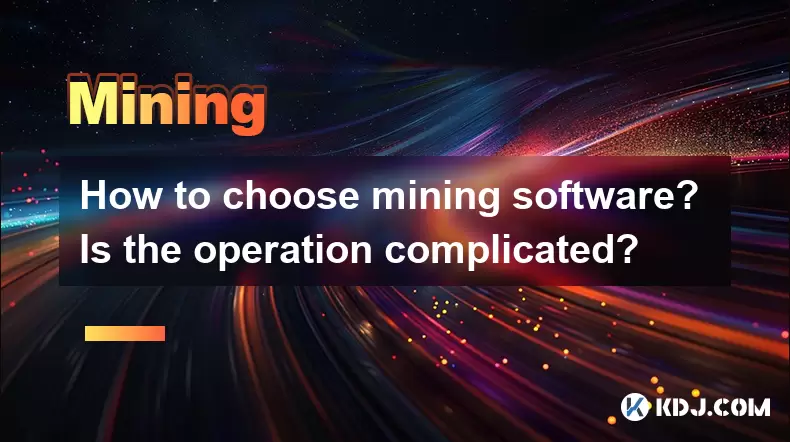-
 Bitcoin
Bitcoin $115500
-2.55% -
 Ethereum
Ethereum $3683
-4.76% -
 XRP
XRP $2.987
-4.87% -
 Tether USDt
Tether USDt $1.000
0.02% -
 BNB
BNB $780.2
-2.56% -
 Solana
Solana $169.9
-5.98% -
 USDC
USDC $0.9999
0.00% -
 Dogecoin
Dogecoin $0.2076
-7.07% -
 TRON
TRON $0.3270
-0.01% -
 Cardano
Cardano $0.7295
-6.68% -
 Hyperliquid
Hyperliquid $40.79
-5.25% -
 Sui
Sui $3.586
-6.89% -
 Stellar
Stellar $0.3949
-6.84% -
 Chainlink
Chainlink $16.75
-7.23% -
 Bitcoin Cash
Bitcoin Cash $568.5
-2.54% -
 Hedera
Hedera $0.2506
-8.16% -
 Avalanche
Avalanche $22.20
-6.84% -
 Ethena USDe
Ethena USDe $1.001
-0.03% -
 Toncoin
Toncoin $3.483
1.28% -
 UNUS SED LEO
UNUS SED LEO $8.932
-0.25% -
 Litecoin
Litecoin $106.0
-4.24% -
 Shiba Inu
Shiba Inu $0.00001237
-5.42% -
 Uniswap
Uniswap $9.357
-7.94% -
 Polkadot
Polkadot $3.667
-5.41% -
 Monero
Monero $307.9
-2.48% -
 Dai
Dai $0.9999
-0.02% -
 Bitget Token
Bitget Token $4.403
-3.06% -
 Cronos
Cronos $0.1393
-5.83% -
 Pepe
Pepe $0.00001067
-7.69% -
 Aave
Aave $259.9
-6.88%
How to choose mining software? Is the operation complicated?
Choosing the right mining software is crucial for efficient cryptocurrency mining; consider compatibility, user interface, and support when selecting.
May 15, 2025 at 06:07 pm

Choosing the right mining software is crucial for anyone looking to engage in cryptocurrency mining. The complexity of the operation can vary depending on the software and the user's level of experience. In this article, we will explore the key factors to consider when selecting mining software and provide a detailed guide on how to use it, ensuring that even beginners can navigate the process with ease.
Understanding Mining Software
Mining software is a program that connects your mining hardware to the blockchain network, allowing you to mine cryptocurrencies. There are various types of mining software available, each designed for different cryptocurrencies and mining setups. The choice of software can significantly impact your mining efficiency and profitability.
When selecting mining software, it's important to consider factors such as compatibility with your hardware, the cryptocurrency you wish to mine, and the software's user interface and features. Some software is designed for solo mining, while others are better suited for pool mining. Understanding these distinctions will help you make an informed decision.
Key Factors to Consider When Choosing Mining Software
When choosing mining software, several key factors should be taken into account to ensure you select the best option for your needs.
Compatibility: Ensure that the software is compatible with your mining hardware. Different software supports different types of GPUs and ASICs, so it's crucial to check the compatibility before making a decision.
Cryptocurrency Support: Not all mining software supports every cryptocurrency. Make sure the software you choose supports the cryptocurrency you want to mine. Popular options include Bitcoin, Ethereum, and Litecoin, but there are many others to consider.
User Interface: A user-friendly interface can make a significant difference, especially for beginners. Look for software that offers clear instructions and an intuitive design to simplify the mining process.
Features: Consider the features offered by the software, such as real-time monitoring, automatic updates, and the ability to switch between different mining pools. These features can enhance your mining experience and efficiency.
Community and Support: A strong community and reliable support can be invaluable, especially if you encounter issues. Look for software with active forums and responsive customer support.
Popular Mining Software Options
There are several popular mining software options available, each with its own strengths and weaknesses. Here are a few notable ones:
CGMiner: Known for its versatility and support for a wide range of mining hardware, CGMiner is a popular choice among miners. It supports both GPU and ASIC mining and is available for Windows, Linux, and macOS.
EasyMiner: As the name suggests, EasyMiner is designed to be user-friendly, making it an excellent choice for beginners. It supports both solo and pool mining and is compatible with Windows and Linux.
MultiMiner: MultiMiner is another user-friendly option that supports multiple mining engines, including CGMiner and BFGMiner. It's available for Windows, macOS, and Linux and offers a straightforward interface for managing your mining operations.
Awesome Miner: Awesome Miner is a powerful tool that supports a wide range of mining software and hardware. It offers advanced features such as remote management and is available for Windows.
How to Install and Set Up Mining Software
Installing and setting up mining software can seem daunting, but with the right guidance, it can be a straightforward process. Here's a step-by-step guide on how to get started:
Download the Software: Visit the official website of the mining software you've chosen and download the latest version. Make sure to download from a reputable source to avoid malware.
Install the Software: Follow the installation instructions provided by the software. This typically involves running the installer and following the on-screen prompts. Ensure that you install the software in a location where you have sufficient permissions.
Configure the Software: Once installed, open the software and navigate to the settings or configuration section. Here, you'll need to enter your mining pool details, including the pool URL, your username, and password. If you're solo mining, you'll need to configure the software to connect directly to the blockchain network.
Connect Your Hardware: Ensure that your mining hardware is properly connected to your computer. The software should detect your hardware automatically, but you may need to manually configure it if it doesn't.
Start Mining: Once everything is set up, you can start mining. Most software will have a "Start" or "Mine" button that initiates the mining process. Monitor your mining activity through the software's interface to ensure everything is running smoothly.
Troubleshooting Common Issues
Even with the best preparation, you may encounter issues while using mining software. Here are some common problems and how to address them:
Software Not Detecting Hardware: If the software doesn't detect your mining hardware, ensure that the hardware is properly connected and powered on. You may need to update your drivers or check the software's settings to ensure it's configured to detect your specific hardware.
Connection Issues: If you're having trouble connecting to a mining pool, double-check your pool details and ensure that your internet connection is stable. Some pools may have specific requirements or settings that need to be adjusted.
Low Hash Rate: A low hash rate can indicate a problem with your hardware or software configuration. Check your hardware for overheating or other issues, and ensure that the software is configured correctly for your setup.
Software Crashes: If the software crashes frequently, it could be due to outdated drivers, incompatible hardware, or a bug in the software itself. Try updating your drivers and software to the latest versions, and check the software's forums for any known issues and solutions.
Optimizing Your Mining Setup
To maximize your mining efficiency, it's important to optimize your setup. Here are some tips to help you get the most out of your mining software:
Monitor and Adjust: Regularly monitor your mining activity through the software's interface. Look for any anomalies or inefficiencies and adjust your settings as needed to improve performance.
Update Regularly: Keep your mining software and hardware drivers up to date. Updates often include performance improvements and bug fixes that can enhance your mining efficiency.
Join a Mining Pool: If you're not already part of a mining pool, consider joining one. Mining pools can increase your chances of earning rewards by combining the computing power of multiple miners.
Manage Heat: Mining can generate a lot of heat, which can affect your hardware's performance and lifespan. Ensure that your mining setup is well-ventilated and consider using cooling solutions to manage heat effectively.
Frequently Asked Questions
Q: Can I use the same mining software for different cryptocurrencies?
A: It depends on the software. Some mining software supports multiple cryptocurrencies, while others are designed for specific ones. Always check the software's documentation to see which cryptocurrencies it supports.
Q: Is it necessary to join a mining pool, or can I mine solo?
A: You can mine solo, but joining a mining pool can increase your chances of earning rewards more consistently. Solo mining can be more profitable if you find a block, but it's less predictable.
Q: How often should I update my mining software?
A: It's a good practice to check for updates regularly, at least once a week. Updates can improve performance and fix bugs, so staying current is beneficial.
Q: Can mining software run on a laptop?
A: While it's technically possible to run mining software on a laptop, it's not recommended due to the high power consumption and heat generation, which can damage the laptop. Desktop computers with dedicated mining hardware are more suitable for mining.
Disclaimer:info@kdj.com
The information provided is not trading advice. kdj.com does not assume any responsibility for any investments made based on the information provided in this article. Cryptocurrencies are highly volatile and it is highly recommended that you invest with caution after thorough research!
If you believe that the content used on this website infringes your copyright, please contact us immediately (info@kdj.com) and we will delete it promptly.
- Rarible Integrates Somnia Blockchain: A New Era for NFT Gaming?
- 2025-08-01 12:30:11
- JPMorgan, Coinbase, and Crypto Mainstream: A New York Minute on the Future of Finance
- 2025-08-01 12:30:11
- Altcoin Season in Full Swing: Market Shift and Key Metrics to Watch
- 2025-08-01 12:50:12
- Ripple, XRP, and RLUSD: Navigating Growth and Innovation
- 2025-08-01 08:30:37
- Tether's Triumph: Profits, US Initiatives, and Stablecoin Supremacy
- 2025-08-01 09:11:00
- Ethereum, ZK-VMs, and Quantum Resistance: A New Era for Blockchain Security?
- 2025-08-01 09:30:12
Related knowledge

What was the highest APY for IRON mining?
Jul 23,2025 at 05:14am
Understanding IRON Token and Its Mining MechanismThe IRON token is a stablecoin that operates within the Iron Finance ecosystem, primarily on blockcha...

What is impermanent loss in IRON pools?
Jul 23,2025 at 09:00am
Understanding Impermanent Loss in the Context of IRON PoolsImpermanent loss is a phenomenon that affects liquidity providers in decentralized finance ...

How to claim rewards from IRON mining?
Jul 23,2025 at 02:21pm
Understanding IRON Mining and Reward MechanismsIRON Finance operated as a decentralized finance (DeFi) protocol on the Polygon and Binance Smart Chain...

How to claim rewards from IRON mining?
Jul 29,2025 at 05:07am
Understanding IRON Mining and Reward MechanismIRON is a dual-token system designed to stabilize the value of a synthetic asset through a combination o...

IRON mining tutorial for beginners
Jul 27,2025 at 12:01am
What Is IRON and How Does It Work in the Cryptocurrency Ecosystem?IRON is a cryptocurrency token that operates on the Binance Smart Chain (BSC) and is...

How to calculate APY for IRON mining?
Jul 28,2025 at 09:49am
Understanding APY in the Context of IRON Token MiningWhen engaging in IRON token mining within decentralized finance (DeFi) platforms, Annual Percenta...

What was the highest APY for IRON mining?
Jul 23,2025 at 05:14am
Understanding IRON Token and Its Mining MechanismThe IRON token is a stablecoin that operates within the Iron Finance ecosystem, primarily on blockcha...

What is impermanent loss in IRON pools?
Jul 23,2025 at 09:00am
Understanding Impermanent Loss in the Context of IRON PoolsImpermanent loss is a phenomenon that affects liquidity providers in decentralized finance ...

How to claim rewards from IRON mining?
Jul 23,2025 at 02:21pm
Understanding IRON Mining and Reward MechanismsIRON Finance operated as a decentralized finance (DeFi) protocol on the Polygon and Binance Smart Chain...

How to claim rewards from IRON mining?
Jul 29,2025 at 05:07am
Understanding IRON Mining and Reward MechanismIRON is a dual-token system designed to stabilize the value of a synthetic asset through a combination o...

IRON mining tutorial for beginners
Jul 27,2025 at 12:01am
What Is IRON and How Does It Work in the Cryptocurrency Ecosystem?IRON is a cryptocurrency token that operates on the Binance Smart Chain (BSC) and is...

How to calculate APY for IRON mining?
Jul 28,2025 at 09:49am
Understanding APY in the Context of IRON Token MiningWhen engaging in IRON token mining within decentralized finance (DeFi) platforms, Annual Percenta...
See all articles

























































































